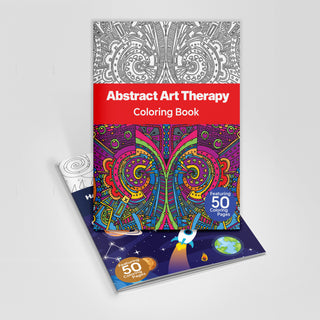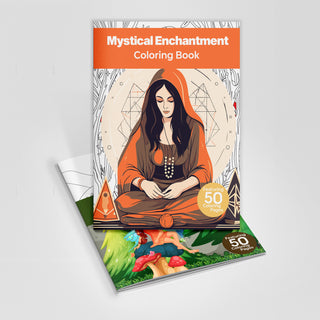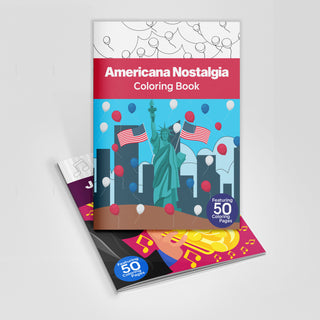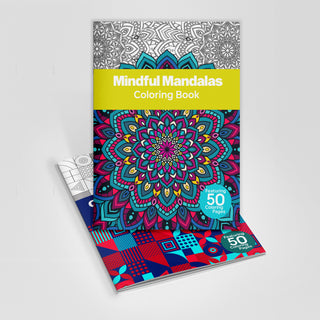Mandalas are ancient designs that have been used in various cultures around the world for centuries.
Find your inner peace and explore the benefits of coloring mandalas.
These circular designs are more than just works of art - they have deep spiritual and cultural significance.
From Hinduism and Buddhism to Native American traditions, mandalas have been used in spiritual practices, healing rituals, and meditation.
Today, mandalas are becoming increasingly popular as a way to reduce stress and anxiety.
With the rise of adult coloring books, mandalas are now a popular subject for coloring.
The intricate designs and repetitive patterns of mandalas can be a calming and meditative experience, making them a useful tool for anyone looking to improve their mental health.
In Hinduism and Buddhism, mandalas were often used as aids in meditation.
The circular design of the mandala was said to represent the universe and the idea of wholeness.
Mandalas were often created using sand, and the process of creating the mandala was as important as the finished product.
Monks would spend hours or even days carefully placing the sand to create intricate designs.
Once the mandala was complete, it was destroyed, symbolizing the impermanence of life.
In Tibetan Buddhism, mandalas were used to aid in spiritual practices and were also believed to have healing properties.
Mandalas were created using a variety of materials, including sand, cloth, and paint.
The intricate designs of the mandalas were thought to represent the journey of the soul and the stages of spiritual development.
In Native American cultures, mandalas were used as symbols of spirituality and healing.
Navajo sand paintings, which are similar to mandalas, were used in healing rituals and were thought to have the power to restore balance and harmony.
The intricate designs of the sand paintings were said to represent the interconnectedness of all things.

Today, mandalas are still used in spiritual practices, but they are also popular for artistic expression and relaxation.
Mandalas are often used in coloring books, which have become popular in recent years as a way to reduce stress and anxiety.
The intricate designs and repetitive patterns of mandalas can help to quiet the mind and promote mindfulness, making them a useful tool for anyone looking to reduce stress and improve their mental health.
Whether used for spiritual practices or as a tool for relaxation, mandalas have a rich history and cultural significance that make them more than just a passing trend.
If you're looking for a way to reduce stress and improve your mental health, consider trying out a mandala coloring book and tapping into the deep spiritual and cultural significance of this ancient design.

What Is A Mandala?
A mandala is a geometric and symbolic design or pattern that represents the universe or a particular aspect of it, typically used in Hinduism and Buddhism for spiritual and ritual purposes.
The term "mandala" comes from Sanskrit and means "circle" or "center."
RELATED: 210 Inspiring Quotes To Motivate Men
Mandala designs often feature a circular or square shape with intricate patterns, shapes, and colors.
They can be used for meditation, contemplation, and spiritual practice, with the circular shape representing the cyclical nature of life and the universe.
Mandala art can be found in many forms, such as paintings, sand art, and even tattoos.
Mandalas In Different Cultures
Hinduism
Mandalas hold significant importance in Hindu culture and spirituality. They are used as a tool for meditation, concentration, and spiritual practice.
Mandalas are believed to represent the cosmic energy and the interconnectedness of all things in the universe.
In Hinduism, mandalas are often used in the worship of deities, with each deity having a specific mandala associated with them.
Mandala designs can be found in temples and shrines, and are used in various rituals and ceremonies.
Mandalas are also used in yoga practice, with practitioners using them to focus their attention and achieve a deeper state of meditation.
Mandalas are believed to help practitioners connect with their inner selves and the larger universe, providing a sense of unity and harmony.
In addition, mandalas are used in traditional Indian art, including paintings and textiles.
The intricate patterns and designs of mandalas are used to create beautiful and intricate pieces of art that are highly valued in Indian culture.
Overall, mandalas hold great spiritual and cultural significance in Hinduism, representing the connection between the individual and the larger universe.
Buddhism
In Buddhist culture, mandalas also hold significant importance and are used for spiritual and meditative purposes.
The word "mandala" in Buddhism means "circle" or "center," and like in Hinduism, represents the universe and the interconnectedness of all things in it.
Mandalas are used in various Buddhist traditions, including Tibetan Buddhism and Vajrayana Buddhism.
In these traditions, mandalas are often used as a tool for meditation and spiritual practice, with practitioners using them to focus their attention and achieve a deeper state of awareness and insight.
Mandalas are also used in the worship of deities, with each deity having a specific mandala associated with them.

Mandalas are often created out of sand in intricate and detailed designs, and are then dismantled after a period of time as a symbol of the impermanence of all things.
In addition, mandalas are used in Buddhist art, including paintings, sculptures, and tapestries.
The intricate designs and patterns of mandalas are used to represent various aspects of Buddhist philosophy and teachings, such as the Four Noble Truths and the Eightfold Path.
In conclusion, mandalas hold great spiritual and cultural significance in Buddhism, representing the interconnectedness of all things in the universe and serving as a tool for meditation, spiritual practice, and artistic expression.
Mesoamerican
Mandalas, or circular designs, also held significant importance in Mesoamerican cultures such as the Aztecs and Maya.
However, the term "mandala" is not used in these cultures, and the designs themselves vary from traditional mandalas found in Hinduism and Buddhism.
In Aztec culture, circular designs were used in various contexts, including religious and artistic expressions.
RELATED: 210 Powerful Law of Attraction Manifestation Quotes
These designs were often used in the creation of ceramics, textiles, and other artwork.
The circular shape was symbolic of the cyclical nature of time and the universe, and was associated with various gods and deities.
In Maya culture, circular designs were used in the creation of calendars, which were essential to their religious and agricultural practices.
These calendars were used to track astronomical events and to determine the timing of various religious ceremonies and rituals.
The circular shape of the calendar was believed to represent the cyclical nature of time and the universe.
In both Aztec and Mayan cultures, circular designs were also used in religious rituals and ceremonies, including human sacrifices.
These designs were believed to have spiritual and mystical powers, and were often associated with specific deities or spirits.
Overall, circular designs held significant cultural and spiritual importance in
Mesoamerican cultures, representing the cyclical nature of time and the universe, and serving as a tool for artistic expression and religious practice.
Christianity
Mandalas, or circular designs, are not typically associated with Christianity as they are in other religions.
However, there are some instances in Christian art where circular designs are used, which may be seen as having a similar symbolic significance.
For example, in medieval Christian art, circular designs were often used in the creation of illuminated manuscripts, stained glass windows, and church architecture.
These designs typically featured intricate patterns and symbolic imagery, such as depictions of angels, saints, and biblical scenes.
The circular shape was seen as representing the divine and infinite nature of God, and was used to emphasize the spiritual significance of the artwork.
In addition, some Christian mystics and spiritual writers have used the concept of the mandala in their teachings.
For example, Saint Hildegard of Bingen, a medieval Christian mystic and visionary, used circular designs in her illuminations and writings as a way of expressing the interconnectedness of all things in the universe, and the unity of God's creation.

Overall, while mandalas are not a central part of Christian tradition or practice, circular designs have been used in Christian art to express the spiritual significance of biblical themes and to convey the infinite nature of God.
Mandalas In Different Disciplines
Mandalas hold significance in various disciplines, including psychology, art therapy, and spiritual practice.
Here are some examples:
- Psychology: In psychology, mandalas are used as a tool for therapy and personal growth. Carl Jung, a famous psychologist, used mandalas as a means of exploring the unconscious mind and as a tool for self-discovery. Mandalas are believed to represent the inner self and the psyche, and can help individuals gain insight into their emotions, thoughts, and behavior patterns.
- Art therapy: Mandalas are also used in art therapy, a form of therapy that uses art-making as a means of expression and healing. Creating mandalas can be a calming and meditative process, and can help individuals connect with their inner selves and emotions. Mandalas can also be used to explore and process difficult emotions and experiences, and can serve as a means of self-expression and self-discovery.
- Spiritual practice: As mentioned earlier, mandalas hold significant spiritual importance in many religions and spiritual practices, including Hinduism, Buddhism, and Mesoamerican cultures. Mandalas are used as a tool for meditation, spiritual practice, and artistic expression, and are believed to represent the interconnectedness of all things in the universe.
- Art and design: In art and design, mandalas are used as a decorative element and as a means of creating visually appealing patterns and designs. The circular shape and intricate patterns of mandalas can be found in a wide range of art forms, including painting, textiles, and architecture.
Mandala Coloring Books
Mandala coloring books are books that contain black-and-white mandala designs that can be colored in by the reader.
These books have gained popularity in recent years as a form of stress relief and relaxation.
The designs in mandala coloring books are typically intricate and symmetrical, with circular shapes and repeating patterns.
The coloring process can be meditative and calming, and is often used as a way to reduce stress and anxiety.
Many people find mandala coloring books to be a form of mindfulness practice, as they require focused attention and can help individuals become more present in the moment.
The process of coloring can also be a creative outlet and a way to express oneself.
Mandala coloring books can be found in a variety of styles, from simple designs to more complex and detailed patterns.
They can be used by people of all ages and skill levels, and can be a fun and relaxing activity to do alone or with others.
Benefits Of Mandala Coloring Books
Mandala coloring books possess numerous benefits, including:
- Stress relief: Coloring mandalas can be a calming and meditative process, which can help reduce stress and anxiety. It can be a way to disconnect from the daily stresses of life and focus on the present moment.
- Mindfulness: Coloring mandalas can be a form of mindfulness practice, as it requires focused attention and can help individuals become more present in the moment. This can lead to a greater sense of awareness and a reduction in feelings of distraction or overwhelm.
- Creativity: Coloring mandalas can be a creative outlet and a way to express oneself. It can provide a sense of accomplishment and satisfaction when completing a design.
- Improved mood: Coloring can release endorphins and dopamine, which can improve mood and increase feelings of happiness.
- Improved focus: Coloring mandalas can help improve concentration and focus, as it requires attention to detail and precision.
- Relaxation: Coloring mandalas can promote a sense of relaxation and inner peace, which can lead to improved overall well-being.
Mandala coloring books can be a fun and effective way to promote relaxation, mindfulness, creativity, and improved mood.
They can be used by people of all ages and skill levels, and can be a beneficial activity to do alone or with others.
Who Can Benefit From Mandala Coloring Books?
Mandala coloring books are for everyone, regardless of age or skill level.
They can be enjoyed by children and adults alike, providing a fun and creative activity for families to do together.
RELATED: 96 Of Jerry & Esther Hicks’ Most Influential & Inspiring Quotes To Become Your Best Self
Children can benefit from coloring mandalas as it can help to develop fine motor skills, hand-eye coordination, and creativity.
Adults can use mandala coloring as a way to unwind after a long day or as a tool for mindfulness and meditation.
Mandala coloring books can also be beneficial for those who suffer from mental health issues such as anxiety, depression, and PTSD.
Coloring mandalas can help to reduce symptoms of these conditions by providing a relaxing and calming activity that can distract the mind from negative thoughts and emotions.
Tips For Coloring Mandalas
Coloring mandala coloring pages can be a relaxing and enjoyable activity.

Here are some tips to make your mandala coloring experience more fun and satisfying:
- Choose your color palette: Decide on a color scheme before you start coloring. You can use analogous colors (colors that are adjacent to each other on the color wheel), complementary colors (colors that are opposite each other on the color wheel), or any other color combination that you like.
- Start with the center: The center of the mandala is usually the focal point. Begin by coloring the center with a bold color, and work your way outwards.
- Use different shades: Use different shades of the same color to create depth and dimension. You can also use light and dark shades of the same color to create a gradient effect.
- Experiment with different coloring tools: You don't have to use just colored pencils to color mandalas. You can also use markers, gel pens, watercolor paints, or any other coloring tool that you like.
- Blend colors: You can blend colors together to create a smooth transition between two colors. You can do this by using a blending tool, like a blending pencil or a blending stump.
- Take breaks: Coloring mandalas can be a relaxing activity, but it can also be tiring if you do it for too long. Take breaks to stretch your fingers and rest your eyes.
- Enjoy the process: Remember that coloring mandalas is not about the final product, but about the process of coloring. Enjoy the process and let your creativity flow!

Frequently Asked Questions
Do I Need To Have Artistic Skills To Color Mandalas?
No, you do not need to have any artistic skills to color mandalas.
Mandalas are designed to be colored by anyone, regardless of their artistic abilities.
The focus is on the process of coloring and the relaxation and stress relief that it provides, rather than the final product.
What Materials Do I Need To Color Mandalas?
To color mandalas, you will need coloring tools such as colored pencils, markers, or crayons.
You can also use blending tools such as blending stumps or blending pencils to create smooth transitions between colors.
You may also want to use a ruler or compass to create straight lines and perfect circles.
Can Coloring Mandalas Be Therapeutic?
Yes, coloring mandalas can be therapeutic for many people.
The repetitive and intricate designs can help to quiet the mind and reduce stress and anxiety.
Coloring can also be a meditative practice and can help to promote mindfulness and relaxation.
Some therapists even use coloring mandalas as a tool for treating anxiety, depression, and other mental health issues.
Where Can I Find Mandala Coloring Books?
Mandala coloring books are widely available both online and in stores. You can find them in bookstores, craft stores, and online retailers.
For a budget-friendly and convenient option, we highly recommend an easy accessible, online version!
Continue Reading????????: 129 Inspiring Quotes About Taking Chances






















